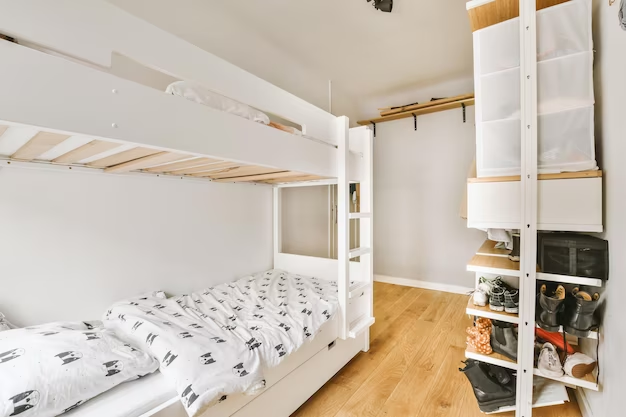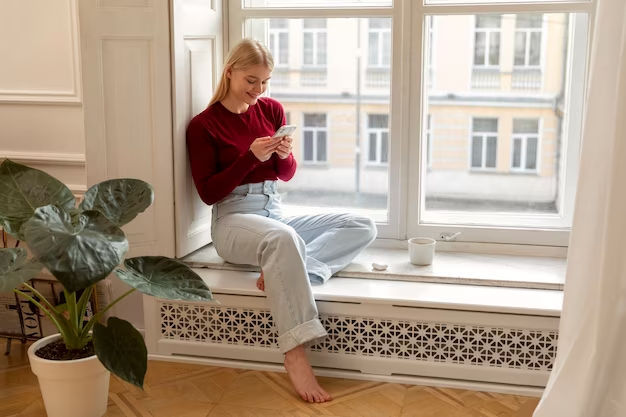When it comes to housing, one question that often pops up is “How many people are allowed to live in a two-bedroom apartment?” This topic is not only intriguing but also crucial for anyone looking to rent or manage a two-bedroom apartment. Understanding the occupancy limits can help ensure you’re following the rules and making the most of your living space.
Understanding Occupancy Limits

Legal Standards
Occupancy limits in a two-bedroom apartment are subject to various legal and safety standards. These standards are primarily established by local housing codes and the policies set by landlords. It’s crucial to comprehend these regulations to ensure that your living situation complies with the law.
Local Housing Codes
Local housing codes serve as a cornerstone in establishing occupancy limits for two-bedroom apartments. Enforced by local governments, these codes are meticulously designed to guarantee the safety and quality of life for tenants. Let’s delve into some common aspects of local housing codes that profoundly affect occupancy limits:
- Maximum Occupants per Bedroom: A fundamental rule in many local housing codes is the “two plus one” formula. This formula typically allows two people per bedroom, along with an additional person permitted within the unit itself. For example, in a standard two-bedroom apartment, the code would typically allow a maximum of five occupants (four in the bedrooms and one in the common areas).
- Square Footage Requirements: Some housing codes may go a step further by specifying minimum square footage requirements per occupant, especially for bedrooms. This ensures that each occupant enjoys a sufficient amount of space for comfortable living, safeguarding against overcrowding.
- Exceptions for Children: Local housing codes often make provisions for accommodating families with children. In many cases, two small children can share a bedroom without affecting the overall occupancy count. This provision allows for more flexible occupancy arrangements within families.
Landlord Policies
Beyond local housing codes, landlords wield the authority to establish their own occupancy rules and policies for their rental properties. These policies can exhibit considerable variation and are frequently influenced by factors such as bedroom size and the overall living space. Consider these factors that may influence occupancy limits as set by landlords:
- Bedroom Size: Landlords may set occupancy limits based on the size of individual bedrooms within the apartment. Larger bedrooms may be permitted to accommodate more occupants, while smaller ones might have more stringent limits.
- Total Living Space: Some landlords take into account the total square footage of the apartment when determining occupancy limits. A larger apartment with spacious common areas may naturally allow for a greater number of occupants, promoting a sense of comfort and ample living space.
Factors Influencing Occupancy
Multiple factors come into play when determining the maximum number of people allowed to live in a two-bedroom apartment. Understanding these factors can provide clarity and help you navigate occupancy regulations effectively:
- Size of the Apartment: The size of the apartment itself significantly influences occupancy limits. Larger two-bedroom apartments generally offer more living space, allowing for the comfortable accommodation of a greater number of people.
- Age of Occupants: Local housing codes often distinguish between children and adults when counting occupants. Children are typically counted differently, and it’s common for two small children to share a bedroom without affecting the overall occupancy count, recognizing the unique needs of families.
- State and Local Laws: It’s essential to recognize that occupancy limits can vary significantly from one location to another due to state and local laws. Some areas may impose stricter regulations with lower occupancy limits, while others may adopt a more lenient approach. It’s imperative to stay informed about the specific regulations applicable in your area to ensure compliance with the law.
Maximizing Your Two-Bedroom Apartment Space

Creative Layouts
To comfortably maximize the space in your two-bedroom apartment, creative layouts can be a game-changer. Consider the following strategies:
- Bunk Beds: For families with children sharing a bedroom, bunk beds are a brilliant choice. They allow you to cleverly stack beds vertically, freeing up valuable floor space for play, study, or simply more room to breathe. Plus, they can add a touch of adventure to your kids’ sleeping arrangements.
- Sofa Beds: In the living room, consider investing in a stylish sofa bed. This dual-purpose piece of furniture seamlessly transitions from a comfortable seating area during the day to a cozy sleeping space for guests at night. It’s a space-saving solution that ensures you’re always ready to host friends or family.
- Room Dividers: Sometimes, you may want to create semi-private spaces within larger rooms to enhance privacy and organization. Room dividers can be your best friend in this regard. They not only delineate different functional areas but also add a touch of aesthetic charm to your apartment.
Storage Solutions
Effective storage solutions are essential for keeping your two-bedroom apartment organized and clutter-free. Here are some practical tips:
- Vertical Storage Marvels: Maximize your apartment’s vertical space by installing shelves and tall cabinets. This strategy not only enhances storage capacity but also ensures that your belongings remain easily accessible and well-organized. Say goodbye to cluttered countertops and cramped closets!
- Under-Bed Storage Secrets: When closet space is limited, under-bed storage comes to the rescue. Utilize this often-overlooked area by investing in storage bins, drawers, or beds with built-in storage compartments. This clever solution allows you to stow away seasonal clothing, extra bedding, or miscellaneous items while maintaining a tidy bedroom.
- Multi-Purpose Furniture Magic: Furnish your apartment with versatile, multi-purpose furniture pieces that serve multiple functions. Ottomans with hidden storage compartments are perfect for concealing extra blankets or magazines. Coffee tables that effortlessly transform into dining tables are a space-saving dream, making impromptu dinner parties a breeze. Consider beds with integrated shelving and drawers to optimize functionality and keep your bedroom well-organized.
Safety and Comfort Considerations
Ensuring Safety
When determining the safe occupancy of a two-bedroom apartment, prioritizing safety measures is of utmost importance. To ensure the well-being of all occupants, consider the following aspects:
- Fire Safety Measures: Begin by assessing fire safety within the apartment. Make sure there are multiple, unobstructed exits from each bedroom and common areas. Install smoke detectors in each bedroom and common spaces, and routinely test them to guarantee they function correctly. Additionally, have fire extinguishers readily accessible and develop a clear evacuation plan that all residents are aware of.
- Ventilation and Air Quality: Adequate ventilation is crucial for maintaining a healthy indoor environment. Ensure that each room has windows to allow for natural airflow. Regularly maintain and service HVAC systems to guarantee efficient ventilation. Address any air quality issues promptly, such as mold or allergen concerns.
- Noise Management: Recognize that increased occupancy can lead to elevated noise levels. Establish designated quiet hours during which noise should be minimized. Consider implementing soundproofing measures like double-glazed windows and acoustic panels to mitigate disturbances. Additionally, promptly address any noise complaints to foster good neighbor relations.
Balancing Comfort and Occupancy
Striking the perfect balance between comfort and occupancy in a two-bedroom apartment is paramount to nurturing a harmonious living environment. Achieving this equilibrium requires thoughtful consideration and meticulous planning to ensure that all residents feel at ease and content in their shared living space. Here are several key considerations to help you achieve this balance:
- Personal Space: Acknowledging the importance of personal space is fundamental when accommodating multiple occupants in a two-bedroom apartment. It’s essential to ensure that each bedroom is sufficiently sized to comfortably house one or more residents. By providing ample room, you allow individuals to create their private havens within the apartment. Additionally, offering practical storage solutions in each bedroom helps maintain an organized and clutter-free environment, contributing to a sense of comfort and well-being for all.
- Common Areas: Shared spaces, such as the kitchen, dining area, living room, and bathroom, significantly influence the overall comfort and functionality of the apartment. To foster a harmonious living environment:
| Area | Description |
| Kitchen | Equip the kitchen with the necessary appliances and utensils to accommodate all residents’ culinary needs. Adequate counter space and storage ensure that meal preparation remains a smooth and enjoyable experience for everyone. |
| Dining Area | Designate a dining area that can comfortably seat all apartment occupants. This provides a communal space for sharing meals, fostering a sense of togetherness, and facilitating interaction. |
| Living Room | Furnishing the living room with comfortable seating and entertainment options, such as a television or board games, enhances the quality of shared leisure time. A well-appointed living room encourages residents to relax, bond, and create lasting memories together. |
| Bathroom | To maintain a comfortable and conflict-free bathroom experience, establish clear guidelines for bathroom usage. This may include designated time slots or routines that help ensure that all residents have equal access and convenience when needed. |
Legal Implications and Tenant Rights
Understanding Your Lease Agreement
Your lease agreement serves as a vital legal document that dictates the terms and conditions of your tenancy, and it often contains specific provisions regarding the occupancy limits in your two-bedroom apartment. These limits are not uniform and can vary significantly from one lease to another, emphasizing the importance of thoroughly reading and comprehending your lease agreement.
- Maximum Occupancy: Within your lease agreement, you will typically find a section specifying the maximum number of individuals permitted to reside in your apartment. The determination of this number takes into account various factors, including the apartment’s size, layout, and adherence to local regulations. It is imperative to carefully review this provision and ensure that you are aware of the permissible occupancy limit. If you have any questions or concerns regarding these limits, it is highly advisable to engage in a discussion with your landlord or property management before affixing your signature to the lease.
- Changing Occupancy Rules: Your lease agreement not only establishes the initial occupancy limits but also outlines the circumstances and conditions under which these rules can be modified during the course of your tenancy. Understanding these conditions is crucial, as landlords are generally bound by the terms of the lease and should not arbitrarily alter occupancy limits without valid legal reasons during the lease term. Being well-informed about these conditions safeguards your rights and ensures that any changes made are done in accordance with the law and the lease agreement.
Furthermore, it’s worth noting that lease agreements can include additional clauses related to occupancy, such as guest policies and restrictions on subletting. These clauses may impact who can stay in your apartment and for how long, adding another layer of complexity to the lease agreement.
Tenant Rights
As a tenant, you possess a set of fundamental rights that are designed to protect your interests and promote a harmonious living environment. These rights play a crucial role in maintaining a balanced and respectful relationship between tenants and landlords, particularly concerning matters related to occupancy:
- Right to Privacy: The right to privacy stands as one of the cornerstone tenant rights. It ensures that your living arrangements, including occupancy limits, remain consistent and predictable throughout the duration of your lease. Generally, landlords should not make arbitrary changes to occupancy rules without valid legal grounds during your lease period. This protection grants you the peace of mind that your living space remains as initially agreed upon, barring any exceptional circumstances necessitating changes.
- Non-Discrimination: Tenant rights are further fortified by laws that prohibit discrimination based on protected characteristics. These characteristics include race, color, religion, sex, national origin, disability, and familial status. When it comes to occupancy limits, these laws have a significant impact. Landlords must adhere to fair housing laws, meaning they cannot impose different occupancy standards for tenants based on these protected characteristics. For instance, it is unlawful for landlords to enforce stricter occupancy limits for families with children compared to other tenant groups. This ensures that all tenants are treated fairly and equally, regardless of their personal characteristics.
Understanding these tenant rights not only helps you navigate the intricacies of your lease agreement but also empowers you to assert your rights when necessary. It’s crucial to be aware of your rights as a tenant to maintain a harmonious and respectful relationship with your landlord while enjoying the privacy and non-discrimination protections that the law affords you.
Conclusion
Determining how many people are allowed to live in a two-bedroom apartment requires a careful look at legal standards, personal needs, and the specific features of the apartment. By understanding the rules and creatively maximizing space, you can ensure a comfortable, safe, and legal living situation for everyone involved.
Remember, whether you’re a tenant or a landlord, staying informed about occupancy limits is key to making the most of your two-bedroom apartment.
FAQ
Q: Can a family of five live in a two-bedroom apartment?
A: It depends on the apartment size and local housing laws. In many cases, a family of five with small children can live in a two-bedroom apartment.
Q: Are there exceptions to how many people are allowed to live in a two-bedroom apartment?
A: Yes, exceptions can be made based on individual circumstances, like the age of the occupants or special needs.
Q: Can a landlord evict tenants for exceeding the occupancy limit?
A: If tenants exceed the legally established limit, a landlord might have grounds for eviction. Always check your lease and local laws.
Q: Does the “two plus one” rule always apply?
A: Not always. Some areas may have different standards, so it’s important to check local regulations.

